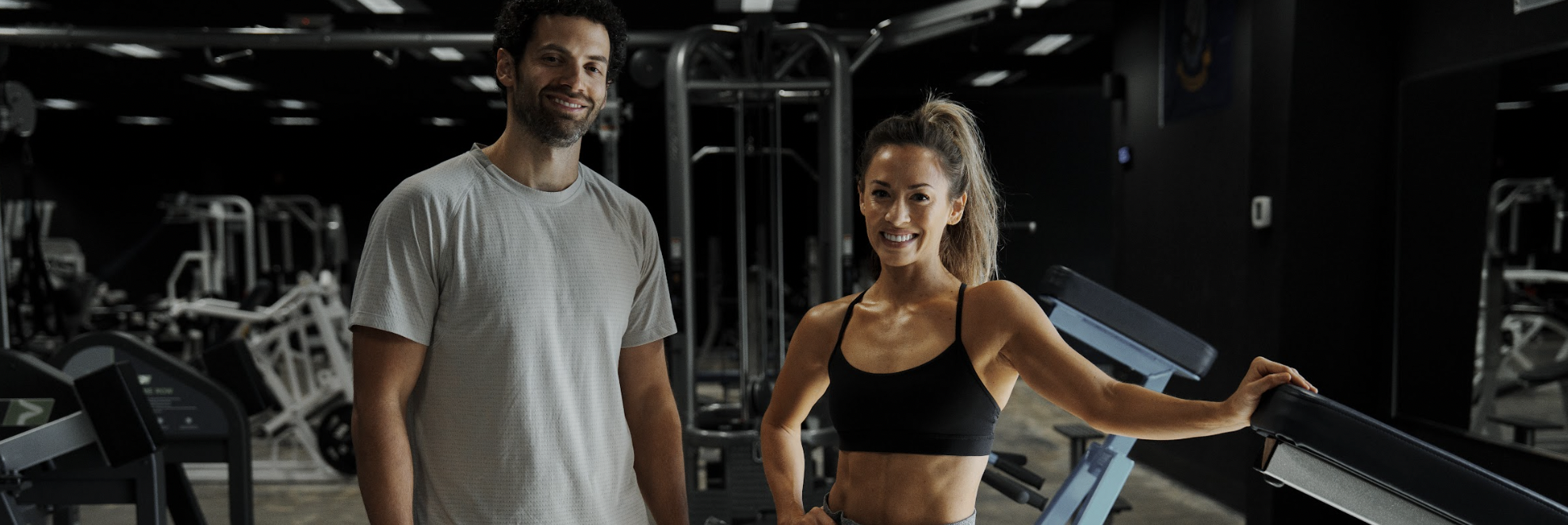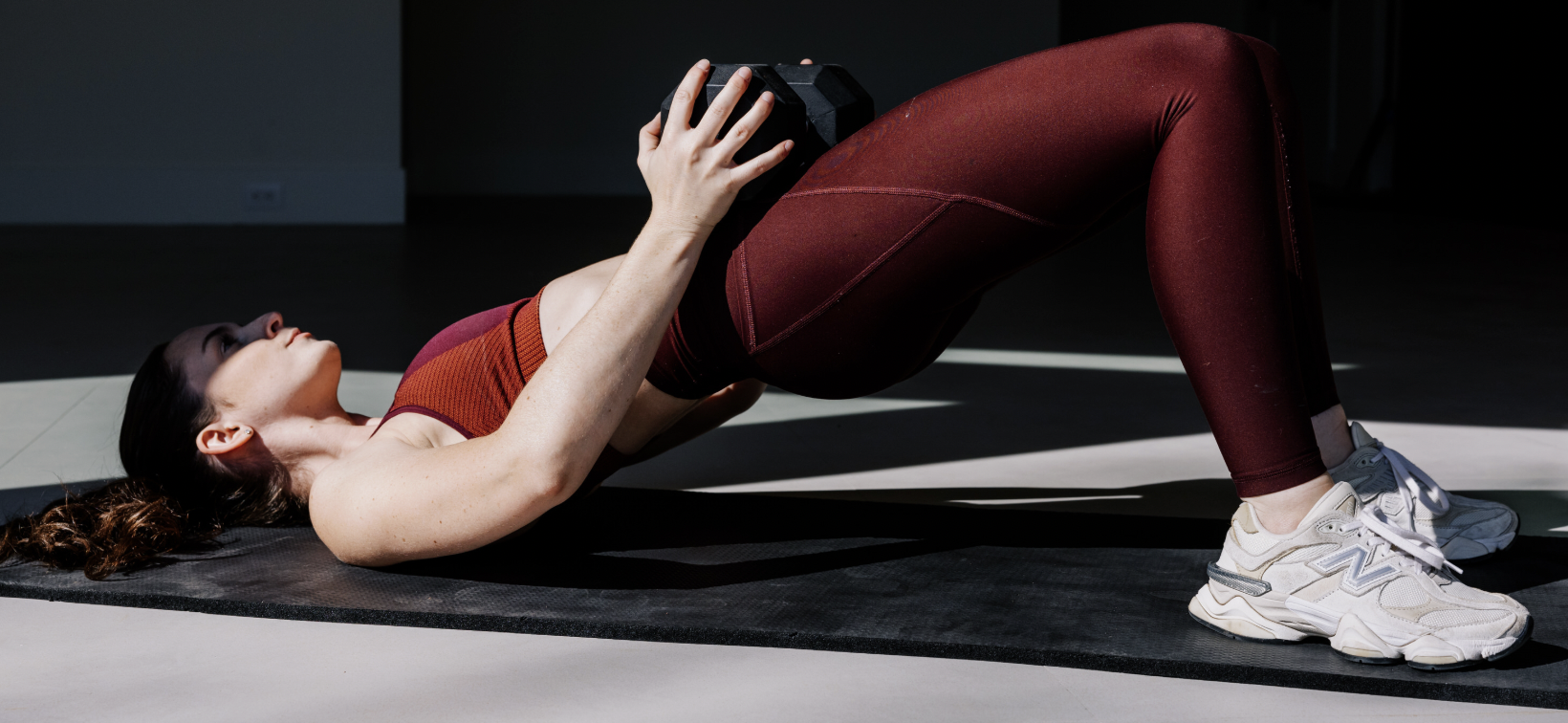Understanding the Varieties of Progressive Overload for Effective Women's Workouts
If you’ve been consistently following your nutrition and exercise regimen, you’ve probably noticed a few subtle (or not-so-subtle) improvements to your physical health. Maybe you’re reaching for heavier weights, running a few extra miles with ease, or suddenly feeling like Superwoman as you lift your kiddo over your head for a ride on your shoulders—or all of the above.
But what happens if you feel like you’ve plateaued in your strength training endeavors, or your newest goal includes growing visibly larger muscles? There’s a simple way to mix up your exercise routine and help you achieve those goals: implement more progressive overload.
Grab those heavy weights, and prepare to challenge yourself as we break down all of the details on progressive overload, including the benefits, various types, and ways you can incorporate them into your next workout.
A Quick Intro: What Is Progressive Overload?
Progressive overload is a principle of strength training that involves increasing the intensity of your workouts to boost your strength, muscle size, and overall fitness. Essentially, it involves adding weight or increasing repetitions in some of your exercises in order to exert temporary excess stress on your muscles.
If you incorporate this principle into your workouts regularly, you’re more likely to notice a few of its worthwhile benefits, including:
- Increased muscle mass – You can thank progressive overload for any post-workout muscle soreness. It’s only temporary, though. Lifting heavier weights causes microtears in the muscle fibers, which your body repairs using amino acids (a.k.a. protein). The result? Bigger, stronger muscles.
- Enhanced resistance – Whether you’re systematically adding reps or using heavier weights, you’re challenging your muscles with a greater resistance level, resulting in increased strength and muscle development.
Types of Progressive Overload
Progressive overload is not a one-size-fits-all affair—and with good reason. While you might be a seasoned lifter, your newly postpartum gym buddy may be at the start of her health and fitness journey (or vice versa). Therefore, the types of progressive overload you each incorporate could be entirely different.
Below, we explore five types of progressive overload to help you determine which ones to consider adding to your current routine.
#1 Increased Weight
One way to incorporate progressive overload involves increasing the total amount of weight you’re lifting by about 10%. However, we understand that the math won’t always align perfectly with the dumbbells available to you. Sigh. Fortunately, you can work around these limitations.
For instance, if you currently use 20-pound dumbbells for shoulder presses, you might not have access to 22-pound dumbbells for a 10% weight increase. In such cases, utilizing 25-pound weights is a feasible alternative. Just keep in mind that you might need to decrease the total number of reps you complete each set—by just a few.
We recommend adding this technique to your future strength workout no matter your fitness level. Those new to lifting can gradually raise their weight to increase their strength, while advanced lifters will benefit from using heavier weights to challenge and grow their muscles.
#2 Added Repetitions
Another way to incorporate progressive overloading is to increase the number of repetitions you perform during each set. Adding extra reps can improve your overall endurance, which is surprisingly helpful when you need an extra dose of stamina to complete those last few Supermom tasks at the end of a long day.
To incorporate this form of progressive overload, begin by adding two repetitions to your current count—from 10 to 12, or 15 to 17. This applies to each set you do, so if you’re used to completing three sets of an exercise, you’ll end up adding six reps altogether.
#3 Extra Sets
Rather than increasing reps or weight, you can also add additional sets to your current exercise lineup. This increases the total volume of weight you’re lifting, which is an excellent strategy for growing muscle and increasing your strength.
#4 Reduced Rest Intervals
For improved cardiovascular fitness, consider shortening your rest periods between each set. For instance, if you typically rest for 90 seconds between rounds, try reducing it by 15 to 30 seconds to sustain a higher heart rate as you transition to the next set. This can effectively boost your cardio endurance levels, which is particularly beneficial in and out of the gym.
#5 Slow and Steady.
A common misconception regarding progressive overload is the belief that it requires heavier, faster exercises, and more of them. But Instead of adding reps or increasing your weight, you can actually push progressive overload by going slower.
- Slow down the movement in each exercise to add time under tension! Going slow on the lowering phase of the movement (or even adding a pause at the bottom of each exercise) will make a move more challenging.
- Focus on mastering your form so you can move more efficiently. Let’s say you can perform a 30lb goblet squat, but your knees constantly cave in.. Spending time mastering your form so that you can perform the movement better, stronger, and safely is a method of progression, and a very important one!
Overloading vs. Overtraining: What’s the Difference?
After reading about the various types of progressive overload, you might feel the exciting buzz of a new workout routine taking root inside your mind—you’ll add a few extra sets here, bump up your weight there, and take less time resting between each set. Ready, set, go!
Just a second. While we love (and applaud) the enthusiasm, it is possible to have too much of a good thing—progressive overload included. Below, we explore the difference between (beneficial) overloading and (potentially damaging) overtraining, and what you can do to avoid the latter.
Overloading vs. Overtraining
As we’ve discussed, overloading is when you place your body under temporarily increased stress using one of the above strategies. Overtraining, however, occurs when a person pushes themselves too hard during training and doesn’t allow enough time for recovery. This can lead to numerous consequences, including:
- Extreme muscle soreness during and after a workout
- Performance declines
- General fatigue
- Poor sleep quality
- Increased blood pressure and resting heart rate
- Irregular or missed periods
How to Avoid Overtraining: The Importance of Progression Pacing
Moves founder Madeline has seen what overtraining can do to even the most fit exercise enthusiasts: “If you want to incorporate progressive overload into your next workout, you have our full support. But instead of adding all five types at once, work your way up slowly and intentionally—this is what we call progression pacing.”
You’ll gradually increase the training volume or intensity of your workouts over time. While not a groundbreaking idea, it is an effective approach that allows you to challenge your body to grow and excel without overwhelming its capacity to recover.
You can pace your workouts by choosing one type of progressive overload to add to your next workout and maintaining that approach for at least a week before transitioning to a different type of overload. For example, consider slowing the eccentric and concentric movement (aka lifting and lowering) of each exercise to maintain muscle tension for longer. Another option might include increasing the weight lifted during each exercise on an upcoming upper body day (once you feel confident in the movements).
To prevent overtraining, ensure your muscles have adequate time to recover by allowing at least 48 hours of rest before targeting the same muscle group again. This gives your muscle fibers time to recuperate, regenerate, and yes, grow.
Progress Past the Plateaus with Moves
The beauty of progressive overload weight training is that women of all ages and stages of their fitness journeys can incorporate this principle into their workouts. Whether you're re-establishing a solid foundation postpartum or after a brief hiatus, or you're a seasoned lifter striving to enhance specific aspects of your physique, progressive overload is a fundamental strategy for reaching your goals.
With the Moves App, you’ll gain access to eight workout programs tailored to your fitness level and goals. You can effortlessly log your workouts, track your workout history, and monitor your weights and reps, helping you to seamlessly incorporate progressive overload into your routine.
Moves member, Alison E., witnessed noticeable changes in just a month. “I have lost pounds and inches, I am physically stronger, and my endurance level has greatly improved.”
Join over 34,000 like-minded members and start your path to a stronger, healthier you. Click here to get started.
FAQs on Progressive Overload
Can progressive overload be applied to home workouts?
Absolutely. There are several progressive overload strategies you can incorporate into your at-home workouts. For instance, if you’re maxed out on your dumbbell weights at home, that’s okay. Instead, try increasing the number of repetitions or sets you’re performing or decreasing the amount of time you rest between sets.
How often should I change my workout plan to avoid plateaus?
When you love your current workout routine, it can be tempting to stick with it for a month or more. But imagine how many exercises you might appreciate (or enjoy even more) if you were mixing up your regimen more frequently.
With Weekly Moves, you’ll have new workouts to try each week. You’ll see some of your favorites in the lineup combined with an exercise or two that might be new to you—that’s the beauty of a new weekly program. Plus, a varied workout routine provides several mental and physical benefits, including:
- Keeping you excited about your weekly workouts
- Minimizing overuse injuries
- Promoting a balanced development of all muscles
What are the signs of effective progressive overload?
Consistently applying overload strategies may result in larger muscles, improved cardio endurance, and the ability to lift heavier weights than you could previously. You might notice those qualities carrying over to other aspects of everyday life, too, like having more energy to keep up with your kids, feeling more confident and empowered at work, and experiencing better overall physical health and well-being.
Sources:
NIH. Progressive overload without progressing load? The effects of load or repetition progression on muscular adaptations. https://www.ncbi.nlm.nih.gov/pmc/articles/PMC9528903/
University of Portsmouth Sport. 7 stages of muscle growth. https://sport.port.ac.uk/news-events-and-blogs/blogs/health-and-fitness/7-stages-of-muscle-growth
NASM. Strength Training Principles: How to Educate New Clients Effectively. https://blog.nasm.org/strength-training-new-clients
HSS. Overtraining: What It Is, Symptoms, and Recovery. https://www.hss.edu/article_overtraining.asp
Better Health. Resistance Training – Health Benefits. https://www.betterhealth.vic.gov.au/health/healthyliving/resistance-training-health-benefits




